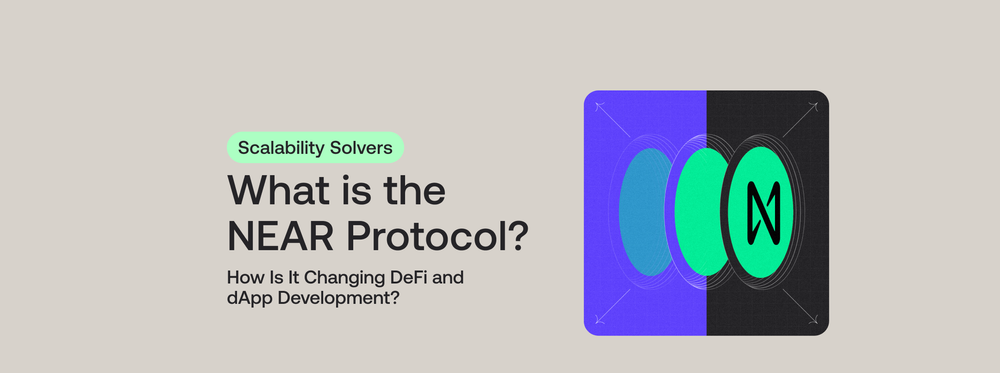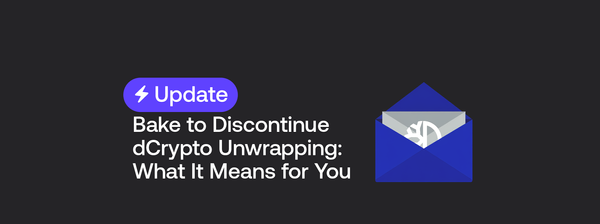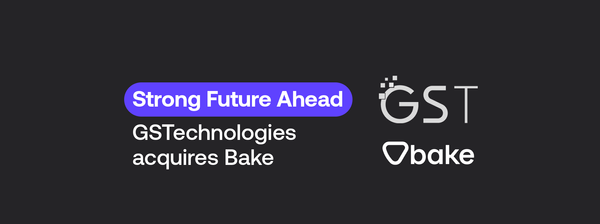What is the NEAR Protocol (NEAR), and How Is It Changing DeFi and dApp Development?
Imagine this: You’re an experienced developer. You have deep expertise in Rust, and you’re interested in building applications in the Web3 space.
Well, you can’t (for the most part). Rust is only compatible with a selection of blockchains, meaning that the applications you build will only be accessible to a small portion of users in the space.
Enter the NEAR Protocol. With support for multiple programming languages like Rust and JavaScript, the NEAR Protocol streamlines the development experience.
You can simply jump aboard and start building decentralized applications (dApps) and decentralized finance (DeFi) solutions in your preferred programming language right away. The best part? Whatever you build is compatible across multiple platforms.
In this article, you will learn how the NEAR Protocol streamlines dApp and DeFi development and how it improves the performance, usability, and accessibility of dApps and DeFi. You will also find out why the NEAR Protocol is widely considered to be a genuine contender to Ethereum.
What Is the NEAR Protocol?
The NEAR Protocol is a Layer 1, smart contract-enabled blockchain that is designed to host dApps.
This is made possible via Nightshade, a sharding mechanism that divides the blockchain into smaller chains that are led by different validators.
With Nightshade, the NEAR Protocol is capable of supporting dApps with high scalability, low latency, and low transaction costs. This enables the NEAR Protocol to be developer-friendly, user-friendly, and interoperable, allowing anyone to easily create, deploy, and use dApps and DeFi solutions on the NEAR network.
The NEAR Protocol has its own native cryptocurrency called the NEAR token, which is used to pay transaction fees, participate in network governance, and secure the network through staking. NEAR has a fixed supply of 1 billion tokens.
History of the NEAR Protocol
In 2018, the NEAR Protocol was founded by engineers Alexander Skidanov (Microsoft) and Illia Polosukhin (Google).
Inspired by the vision of an open web, the pair aimed to build a platform where anyone could build and use dApps that are fast, affordable, and accessible.
The NEAR Protocol’s development began with the research and construction of a novel consensus mechanism called Nightshade, which combines the best aspects of existing PoS systems, such as Tendermint, Casper, and Ouroboros. The idea behind Nightshade is to create a system that enables fast finality, high security, and dynamic sharding.
The NEAR Protocol was launched in October 2020 after two years of research and development. It is backed by some of the most prominent investors and organizations in the blockchain industry, including Andreessen Horowitz, Electric Capital, Pantera Capital, Coinbase Ventures, and even the Ethereum Foundation.
How Does the NEAR Protocol Work?
The NEAR Protocol is based on a sharded proof-of-stake (PoS) architecture (Nightshade). This architecture divides the network into multiple parallel shards.
Each shard (or sub-chain) is spearheaded by a different validator, processing its own subset of transactions independently and efficiently. This allows the NEAR Protocol to achieve a high throughput of up to 100,000 transactions per second (TPS), far exceeding the TPS of a typical single-chain system.
As mentioned earlier, Nightshade borrows elements from existing PoS systems like Tendermint, Casper, and Ouroboros to create a system that enables fast finality to confirm transactions in seconds and high security to withstand malicious attacks.
Nightshade’s sharding scheme is also dynamic, enabling the NEAR network to adjust the number and size of shards according to demand and load. This ensures the network can scale up or down as needed without compromising the performance or security of the system.
Furthermore, the NEAR Protocol prioritizes user experience, lowering the barriers to entry for new users and developers via a unique account model. Unlike other blockchain platforms where users have to manage complex cryptographic keys and addresses, the NEAR Protocol allows users to create human-readable account names.
The NEAR Protocol also supports multiple keys per account, enabling you to access your account from different devices and applications and delegate permissions to third parties.
Finally, cross-chain interoperability is a key priority for the NEAR Protocol. It leverages the existing network effects and innovations of other blockchain platforms and creates a more diverse and rich ecosystem of dApps and DeFi solutions for its users and developers.
Image credit: NEAR Protocol
The NEAR Rainbow Bridge is one such innovation, allowing you to move your ERC-20 assets between the Ethereum, NEAR, and Aurora ecosystems with ease. Reinforced with robust security measures, the Rainbow Bridge successfully blocked an attack in less than 31 seconds in 2022, even causing the attackers to lose 5 ETH in the process.
Why Should You Invest in the NEAR Protocol?
The Near Protocol is instrumental in offering several advantages and benefits for developing and deploying dApps and DeFi solutions.
Here are the key reasons why you should invest in the NEAR Protocol:
The NEAR Protocol is Scalable.
The NEAR Protocol can handle up to 100,000 transactions per second (TPS), compared to Etehreum’s current capacity of 15 TPS. This means that the NEAR Protocol can support sophisticated dApps and DeFi products and accommodate more users and transactions without compromising the speed or quality of the service.
The NEAR Protocol Offers Low Transaction Fees.
The NEAR Protocol has a low and predictable transaction fee structure based on the actual usage of network resources (e.g., storage, bandwidth, and computation). This means that the NEAR Protocol can offer affordable and transparent pricing for dApps and DeFi solutions — a far cry from the network congestion and fee volatility issues faced by Ethereum.
The NEAR Protocol Utilizes a User-Friendly Account Model.
The NEAR Protocol deploys a user-friendly account model. You can create and access your account with a simple and memorable name and manage your keys and permissions with ease and flexibility.
You can also potentially delegate gas fees to third parties like dApp developers and validators, giving you an easier transition into the NEAR Protocol’s ecosystem. By building a low-friction experience for new and existing users, the NEAR Protocol is able to increase the adoption and retention of its dApps and DeFi solutions.
The NEAR Protocol is Built For Developers.
The NEAR Protocol is a developer-friendly platform. Developers can create and deploy dApps and DeFi solutions with minimal effort and cost. It supports multiple programming languages, such as JavaScript, Rust, AssemblyScript, and TypeScript, along with a suite of tools and frameworks like the NEAR SDK, the NEAR CLI, and the NEAR Explorer.
The NEAR Protocol also offers a feature called progressive security, which allows developers to launch their dApps and DeFi solutions with a lower level of security, upgrading them as they grow and mature. This means that the NEAR Protocol can reduce the barriers and risks for new and existing developers and foster a more vibrant and diverse ecosystem of dApps and DeFi solutions.
Is the NEAR Protocol Better Than Ethereum?
NEAR Protocol isn’t as much a competitor to Ethereum as it is a collaborator.
It addresses the main pain points of Ethereum, including scalability, transaction costs, user experience, and developer experience. At the same time, the NEAR Protocol does not have the same level of support and user base compared to Ethereum.
This is why it actively promotes cross-chain interoperability and compatibility with Ethereum. The transfer of assets and data between the NEAR and Ethereum networks is achieved through the Rainbow Bridge, making it possible to move assets and data from one network to the other with ease.
The NEAR Protocol has also built an Ethereum Virtual Machine (EVM)-compatible layer called Aurora, which allows the deployment and execution of Ethereum smart contracts on the NEAR network.
With these key connections in place, the NEAR Protocol is able to leverage the existing infrastructure of Ethereum and offer seamless transition and integration for dApps and DeFi solutions.
Advance the Growth of DeFi and dApps With the NEAR Protocol
The NEAR Protocol is well on its way to achieving its vision of creating an open Web where everyone can participate with few to no entry barriers.
Get started by buying your first NEAR via Bake. NEAR is available as an individual asset or part of the Scalability Solvers Smart Bundle along with AXAX, allowing you to build your position in this space easily.

DISCLAIMER: Please note that the information on this blog and in any articles posted on this blog is for general information only and should not be relied upon as financial advice. Cake Pte. Ltd., Bake, UAB, and its affiliates (the “Cake Group”) are not licensed financial advisers. You may wish to approach your own independent financial advisor before making any decision to buy, sell, or hold any product and/or digital assets mentioned in this blog.




